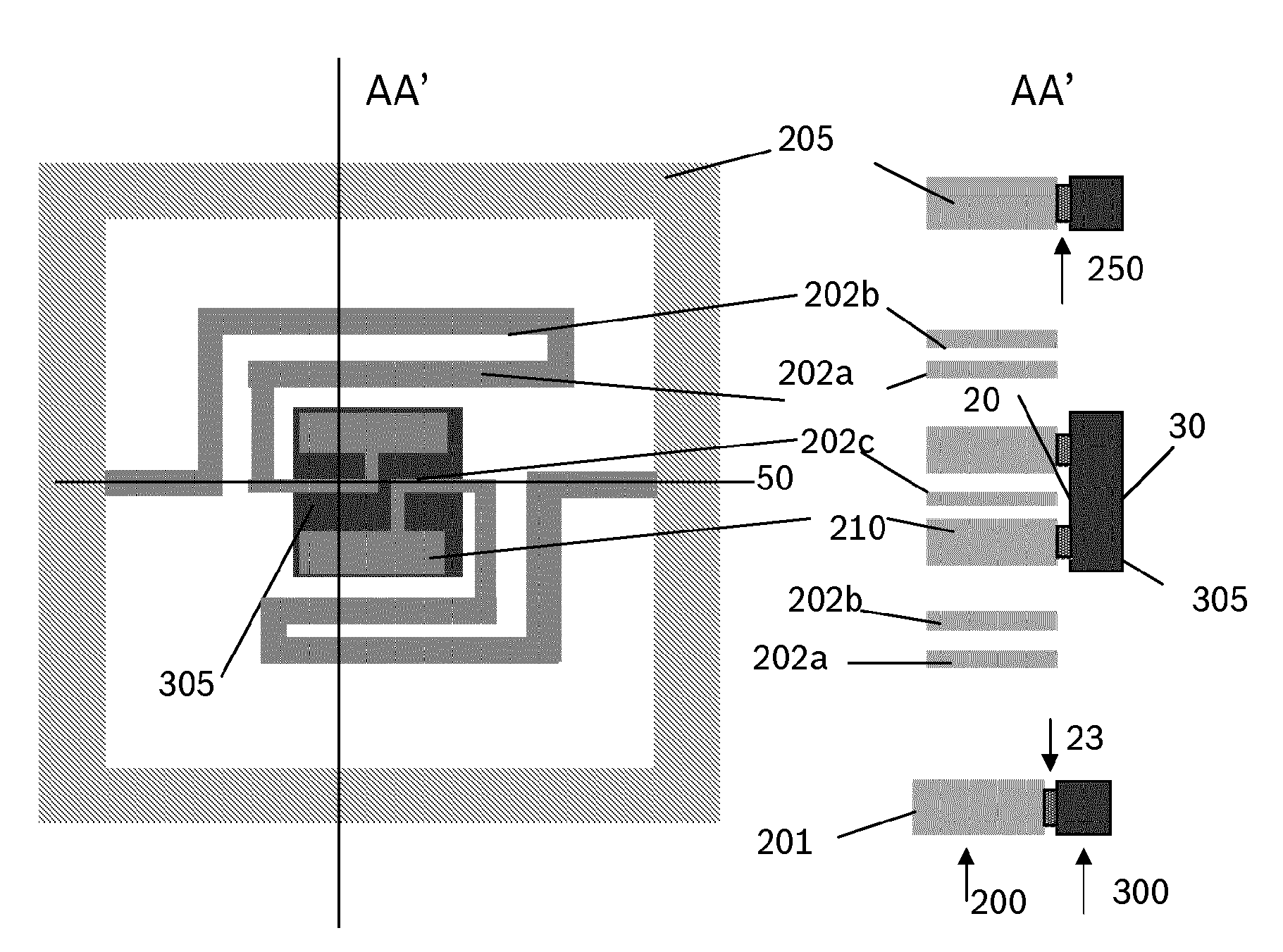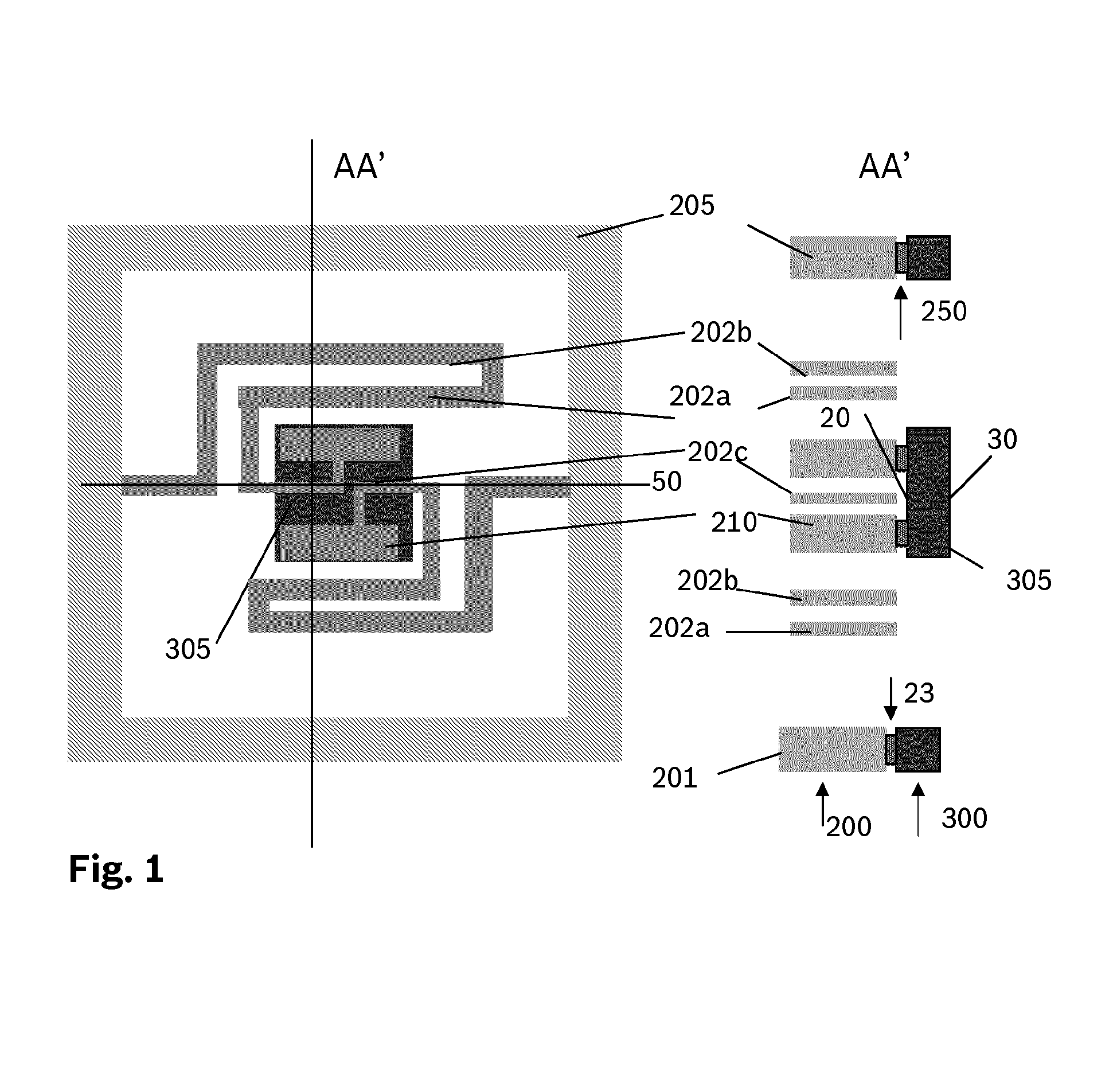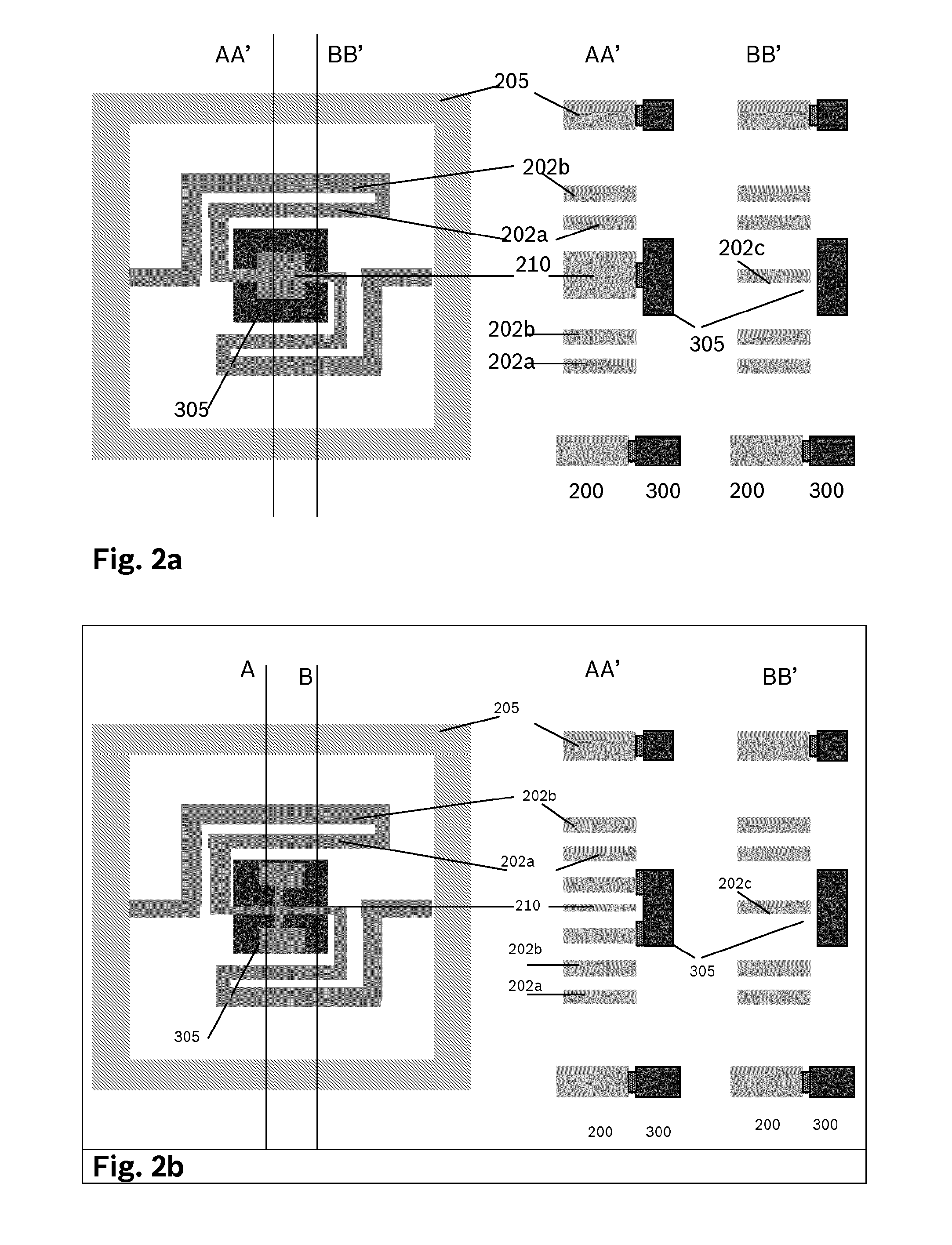Micromirror
a micro-mirror and mirror technology, applied in the field of micro-mirrors, can solve the problems of temperature-dependent static deformation of the mirror, poor image resolution, and difficult to meet requirements, and achieve the effect of flat structural shap
- Summary
- Abstract
- Description
- Claims
- Application Information
AI Technical Summary
Benefits of technology
Problems solved by technology
Method used
Image
Examples
Embodiment Construction
[0034]FIG. 1 shows a first exemplary embodiment of the micromirror according to the present invention. A micromirror is shown including a first layer 200 having a first main extension plane, a second layer 300 having a second main extension plane, the first main extension plane and the second main extension plane being situated parallel to one another, and first layer 200 and second layer 300 being sectionally connected to one another via at least one connection area 23. At least one spring element, in this example two spring elements 202, are implemented in first layer 200. A movably suspended mirror plate 305 is implemented in second layer 300, mirror plate 305 having a mirror surface on a first side 30 parallel to the main extension plane and being connected on an opposing second side 20 via connection area 23 to an anchor 210 of spring element 202. A part of spring element 202 is, spaced apart by connection area 23, movably situated on second side 20 of mirror plate 305 in relat...
PUM
 Login to View More
Login to View More Abstract
Description
Claims
Application Information
 Login to View More
Login to View More - R&D
- Intellectual Property
- Life Sciences
- Materials
- Tech Scout
- Unparalleled Data Quality
- Higher Quality Content
- 60% Fewer Hallucinations
Browse by: Latest US Patents, China's latest patents, Technical Efficacy Thesaurus, Application Domain, Technology Topic, Popular Technical Reports.
© 2025 PatSnap. All rights reserved.Legal|Privacy policy|Modern Slavery Act Transparency Statement|Sitemap|About US| Contact US: help@patsnap.com



